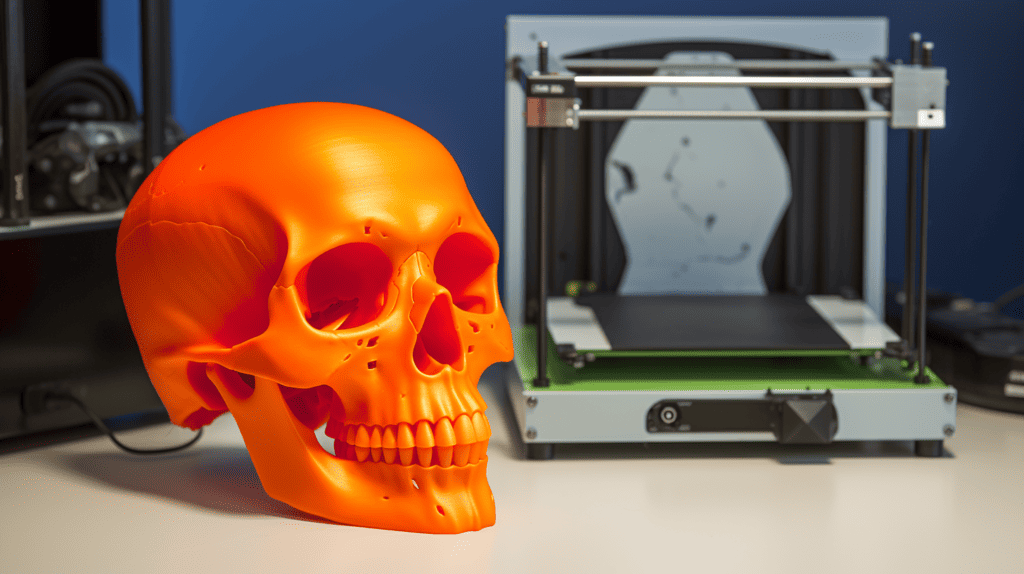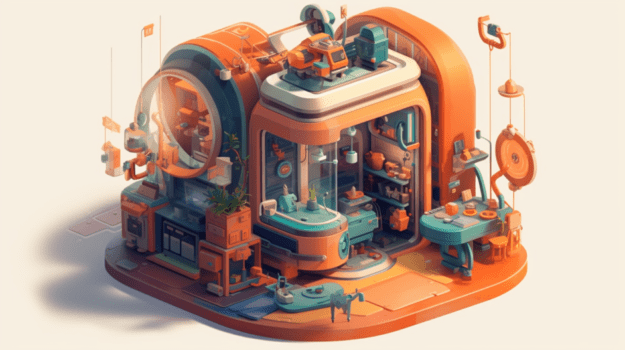Last Updated on July 6, 2023 by Said Al Azri
Introduction
Welcome to the exciting world of 3D printing! One of the most important aspects of 3D printing is choosing the right material for your project. The material you choose can greatly affect the quality, functionality, and appearance of your printed object. In this comprehensive guide, we’ll walk you through the process of selecting the right material for your 3D printing project.
Types of 3D Printing Materials
There are three main types of 3D printing materials: filament, liquid, and powder. Filament materials are used in Fused Deposition Modeling (FDM) printers, the most common type of 3D printer. These materials include plastics like PLA, ABS, and PETG. Liquid materials are used in Stereolithography (SLA) and Digital Light Processing (DLP) printers. These materials are photosensitive resins that harden when exposed to UV light. Powder materials are used in Selective Laser Sintering (SLS) printers. These materials include nylon, polystyrene, and metal powders.
Each type of material has its own advantages and limitations. For example, filament materials are easy to use and relatively inexpensive, but they may not offer the same level of detail and finish as liquid and powder materials. On the other hand, liquid and powder materials can produce high-quality prints with fine details, but they are more expensive and require more advanced printers.
Properties of 3D Printing Materials

When choosing a material for your 3D printing project, it’s important to consider its properties. These include physical properties like strength and flexibility, chemical properties like resistance to solvents, optical properties like color and transparency, and thermal properties like melting point.
For example, if you’re printing a part that needs to be strong and durable, you might choose a material like ABS or nylon. If you need a flexible part, TPU or flexible PLA might be a good choice. If you’re printing a decorative object that needs to be transparent or translucent, a clear resin or PETG filament could be the right choice.
Popular 3D Printing Materials
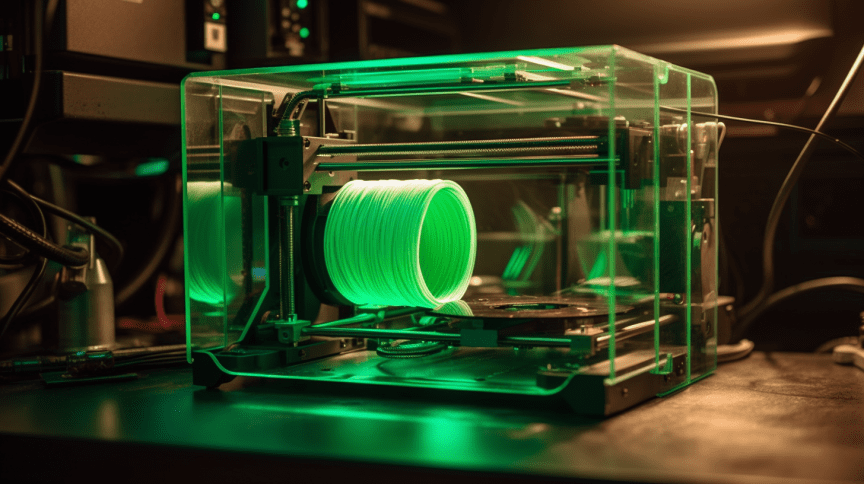
There are many different materials available for 3D printing, each with its own unique properties and uses. Here are some of the most popular ones:
- PLA: This is the most common material used in 3D printing. It’s easy to print with, biodegradable, and comes in a wide variety of colors.
- ABS: This is a strong and durable material that’s commonly used for making parts that need to withstand high temperatures.
- Nylon: This is a flexible and durable material that’s great for printing moving parts or parts that need to withstand wear and tear.
- PETG: This is a clear material that’s great for printing transparent objects.
- TPU: This is a flexible material that’s great for printing flexible parts like phone cases or wearable items.
- Polycarbonate: This is a strong and durable material that’s great for printing parts that need to withstand high impact or stress.
- Resin: This is a liquid material that’s used in SLA or DLP printers. It’s great for printing highly detailed objects.
Each of these materials has its own advantages and limitations, so it’s important to choose the one that best fits your project needs.
Choosing the Right Material
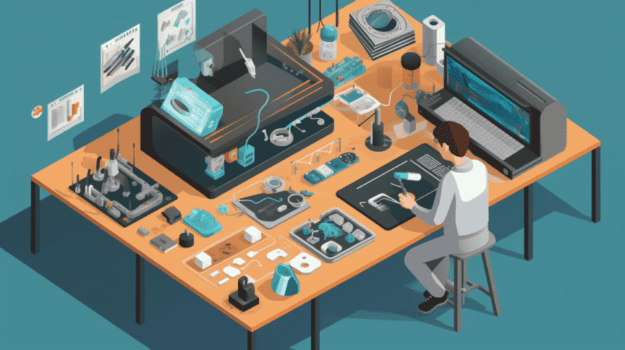
Choosing the right material for your 3D printing project can be a complex process. It involves understanding the requirements of your project, the properties of different materials, and the capabilities of your 3D printer.
First, you need to understand the requirements of your project. What is the purpose of the object you’re printing? Will it be used for functional purposes, or is it purely decorative? Does it need to be strong and durable, or flexible and bendable? Does it need to withstand high temperatures or specific environmental conditions? Answering these questions will help you determine which material properties are most important for your project.
Next, you need to understand the properties of different materials. As we discussed earlier, each material has its own unique set of properties, including physical, chemical, optical, and thermal properties. You’ll need to choose a material whose properties align with the requirements of your project.
Finally, you need to consider the capabilities of your 3D printer. Not all printers can print with all materials. For example, FDM printers can print with a wide range of filament materials, but they can’t print with liquid or powder materials. Similarly, SLA and DLP printers can print with liquid materials, but not with filament or powder materials. Make sure to choose a material that is compatible with your 3D printer.
Material Compatibility
One of the most important factors to consider when choosing a material for your 3D printing project is compatibility. Not all materials are compatible with all printers. For example, FDM printers can print with a wide range of filament materials, but they can’t print with liquid or powder materials. Similarly, SLA and DLP printers can print with liquid materials, but not with filament or powder materials.
Using an incompatible material can lead to a variety of problems, including poor print quality, printer damage, and even safety hazards. Always make sure to check the manufacturer’s recommendations for material compatibility before starting your print.
Material Cost
Cost is another important factor to consider when choosing a material for your 3D printing project. The cost of 3D printing materials can vary widely, from relatively inexpensive filament materials to more expensive liquid and powder materials.
When considering cost, it’s important to balance quality and affordability. While it might be tempting to choose the cheapest material available, this could result in poor print quality or durability. On the other hand, choosing the most expensive material might not be necessary if a cheaper material can meet your project requirements.
Testing and Prototyping
Before committing to a particular material for your 3D printing project, it’s a good idea to do some testing and prototyping. This can help you determine whether the material is suitable for your project and identify any potential issues before you start the final print.
Testing can involve printing a small sample or prototype of your object and evaluating its quality, durability, and functionality. This can give you a better idea of how the material will perform in the final print and allow you to make any necessary adjustments to your design or printer settings.
Material Safety

Safety is an important consideration when working with 3D printing materials. Many materials contain chemicals that can be harmful if inhaled or ingested, and some can be flammable or reactive under certain conditions.
Always follow the manufacturer’s safety guidelines when handling 3D printing materials. This might include wearing protective clothing, using a well-ventilated area, and properly disposing of waste materials.
Special Considerations
In addition to the general considerations discussed above, there may be special considerations for specific materials or applications. For example, if you’re printing an object that will come into contact with food, you’ll need to choose a food-safe material like certain types of PLA. If you’re printing an object that will be exposed to the outdoors, you’ll need to choose a UV-resistant material like ASA.
There are also materials designed for specific applications, like flexible TPU for printing flexible parts, or high-temperature materials like PEEK for printing parts that need to withstand high temperatures. Always consider the specific requirements of your project when choosing a material.
Latest Developments and Innovations

The world of 3D printing is constantly evolving, with new materials being developed all the time. Some of the latest advancements include conductive filaments for printing electronic components, carbon fiber-infused filaments for increased strength and stiffness, and biodegradable materials for environmentally friendly printing.
These new materials offer exciting possibilities for 3D printing, but they also come with their own challenges and considerations. Always stay up-to-date with the latest developments in 3D printing materials and consider how they might benefit your projects.
Introducing Different Printing Processes

Different types of 3D printing processes are suitable for different materials. For example, Fused Deposition Modeling (FDM) is commonly used with filament materials, while Stereolithography (SLA) and Digital Light Processing (DLP) are used with liquid materials. Selective Laser Sintering (SLS) and Direct Metal Laser Sintering (DMLS) are used with powder materials.
Each printing process has its own advantages and limitations, and the choice of process can greatly affect the quality and properties of the printed object. Always consider the printing process when choosing a material for your 3D printing project.
Maintaining Material Quality
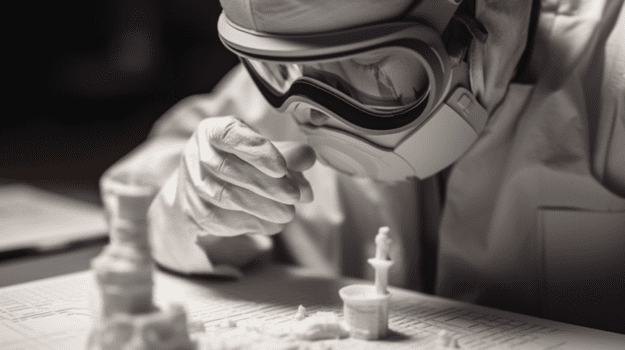
Proper storage and handling of 3D printing materials is crucial for maintaining their quality. Exposure to moisture, heat, or UV light can degrade the quality of the material and affect the quality of the print. Always store your materials in a cool, dry place and handle them with clean hands to prevent contamination.
Popular Brands
There are many brands that produce 3D printing materials, each with their own strengths and weaknesses. Some of the most popular brands include Hatchbox, eSUN, and MatterHackers for filament materials, and Formlabs and Anycubic for resin materials. Always consider the reputation and reviews of the brand when choosing a material for your 3D printing project.
Troubleshooting Common Issues

Common issues in 3D printing can often be resolved by choosing the right material. For example, warping can be mitigated by using a material with a low shrinkage rate, like PLA. Stringing can be reduced by using a material with a low melting temperature, like TPU. Always consider the potential issues and how they can be mitigated by material selection.
Sustainability and Environment
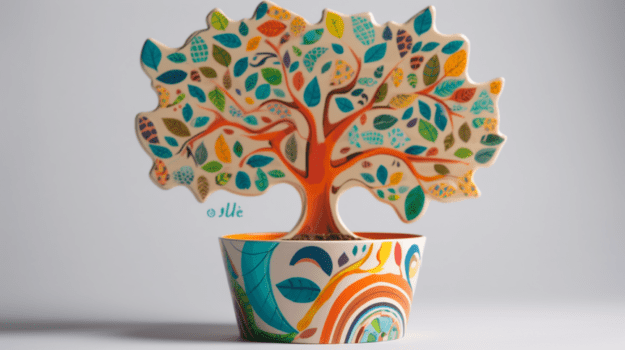
As 3D printing becomes more popular, the environmental impact of 3D printing materials is becoming a major concern. Many companies are now producing eco-friendly materials, like biodegradable PLA and recycled PETG. Always consider the environmental impact of your material choice and look for ways to reduce waste and recycle used materials.
Tips for Beginners

If you’re new to 3D printing, choosing the right material can be a daunting task. But don’t worry, we’re here to help! Start with a beginner-friendly material like PLA, which is easy to print with and comes in a wide variety of colors. As you gain more experience, you can start experimenting with other materials like ABS, PETG, or even resin.
Remember, the key to successful 3D printing is experimentation and learning. Don’t be afraid to make mistakes and learn from them. And most importantly, have fun with it! 3D printing is a creative and rewarding hobby that can open up a world of possibilities.
Conclusion
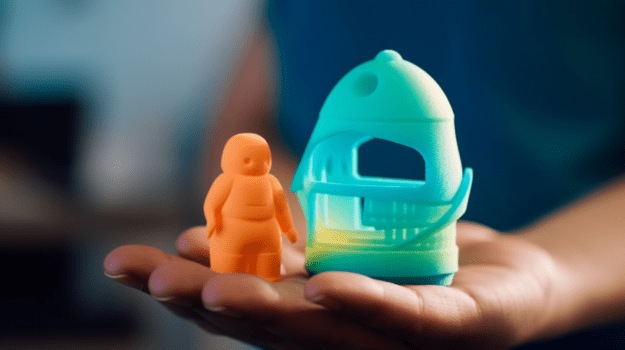
Choosing the right material for your 3D printing project is a crucial step that can greatly affect the quality and functionality of your printed object. By understanding the properties of different materials and how they relate to your project requirements, you can make an informed decision and choose the best material for your needs.
Remember, the world of 3D printing is constantly evolving, with new materials and technologies being developed all the time. Stay curious, keep learning, and happy printing!
FAQs
What is the most commonly used 3D printing material?
PLA, ABS, Nylon, PETG, TPU, Polycarbonate, and Resin are some of the most commonly used 3D printing materials.
What properties should I consider when choosing a 3D printing material?
Physical, chemical, optical, and thermal properties are essential properties to consider when selecting a 3D printing material.
What are the most critical factors to consider when choosing a 3D printing material for my project?
Object size, complexity, usage, printing requirements, and environmental factors are crucial factors to consider when choosing a 3D printing material for your project.


